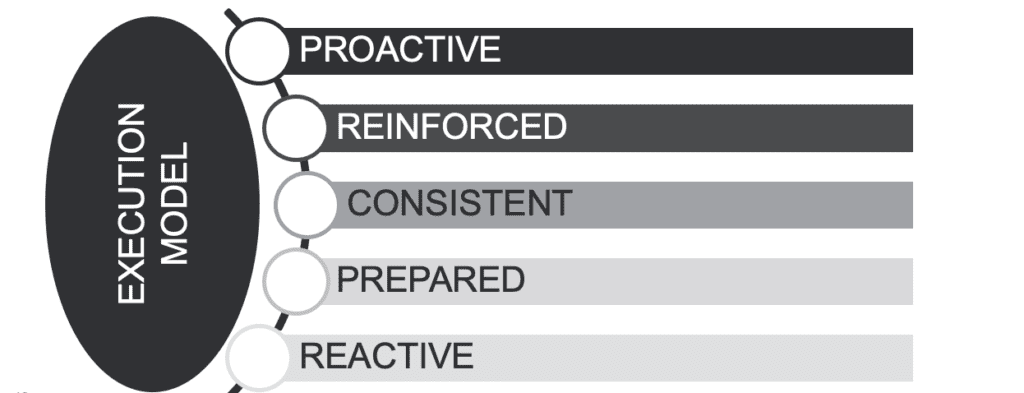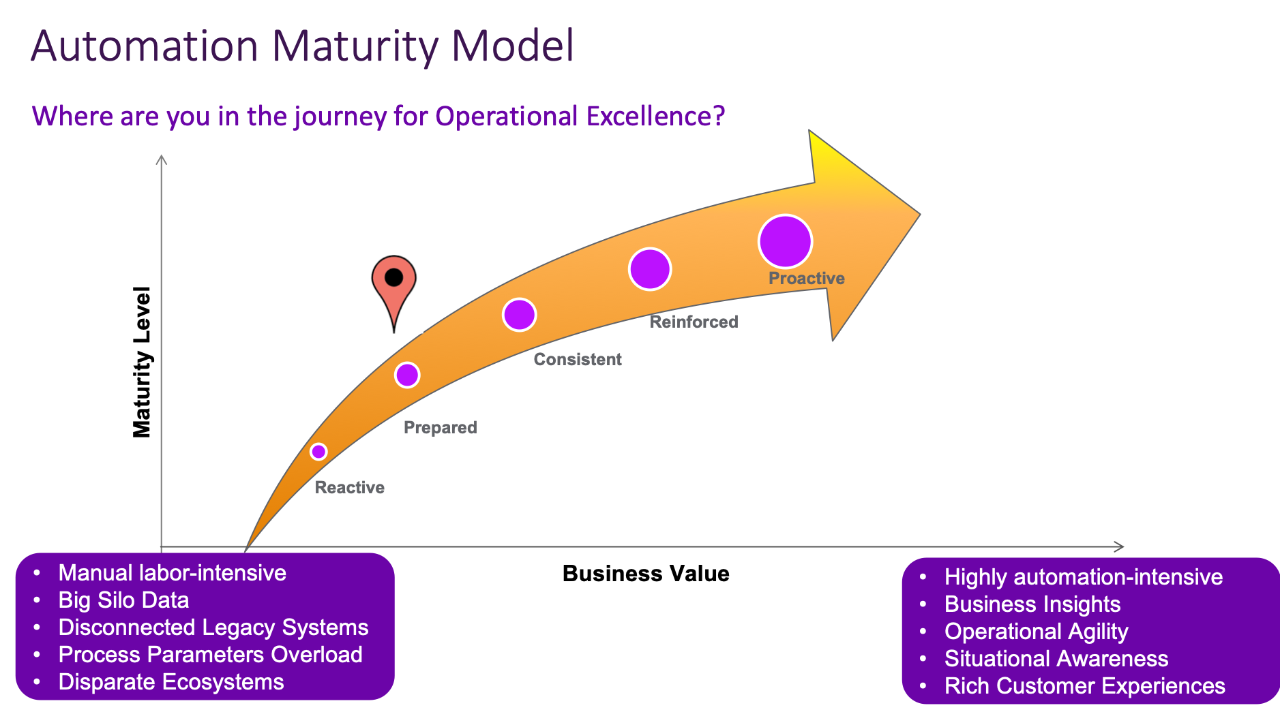Understand Automation Maturity and How it Impacts your Operations Ability to Excel
Written by Omer Qadri
Digital transformation is not a destination, but a journey. There is no quick and easy way of achieving it. There are various ways and means to embark on the journey of digital transformation.
All industrial and manufacturing organizations, along with their partners and customers, are likely to be at a different stage of operational execution maturity, especially in light of their readiness for Industry 4.0. Some organizations might still be far away from being truly Industry 4.0 ready, while some might already be well connected and highly efficient.
What is the Automation Maturity Model?
– A framework for industrial digital advancement that any organization can adopt as a strategic roadmap.
– There are three key aspects of an execution maturity model: People, Process and Technology. Each of these aspects has its own path and timeline to maturity, that closely overlaps with the other two.

1. People: The way people act and behave matures over time as they go from simply employed to trained, where they’re equipped to tackle their basic functions. When people mature to compliant, they’re more aware of their role and behavior within the framework of the organization. When people become invested, they understand the value of improved performance, and actively advance organizational efforts. When people take ownership of their role, they behave proactively to ensure the job is done right, and support others to shape the organizational vision.

2. Technology: The way technology is applied within an organization also matures over time. It traditionally starts with manual data collection and little to no automation. The next step is isolated automation, with isolated PLCs/RTUs connected by a local HMI. As technology matures, it becomes more connected, and typically controlled by a centralized site-level SCADA. At this stage it may also have central remote desktop servers or a historian. When organizations grow more distributed, they’re beginning to extract more information from their technology across several systems, which requires a standardized automation platform that can support an enterprise historian and a mobile workforce. At the forefront are organizations who have completely unified business systems with production systems technologies to leverage a holistic view of the operations–enabling them to operate at a rapid pace.

3. Processes: The way processes mature varies greatly from organization to organization and industry to industry. At the lowest levels of maturity, processes are ad hoc and reactive. They’re mostly experience-based and depend on hand-me-down knowledge. As processes mature and become more defined, now they’re being documented and available for use. As processes shift from defined to managed, they can then be formalized and maintained. As processes adapt through documentation and management, they can be quantitatively managed. KPIs can be tied to reporting and analysis to drive performance. At their most mature, processes can become optimized by consistent improvement and adaptation.

– The resulting framework is the combination of people, technology and process maturity.

An Incremental Journey to Digital Transformation with 100% Investment Protection
Every manufacturer will enter and progress through the stages of the Operational Execution Maturity Model that is most appropriate for it, at a pace determined by its own needs, infrastructure, readiness and resources.
AVEVA offers a phased approach in achieving excellence maturity, as lessons learnt can be incorporated in the future stages and hence reduces the risk of failures. AVEVA approach enables organizations to succeed in one plant/area and then apply lessons learnt as means of continuous process improvement to other plants and facilities.
